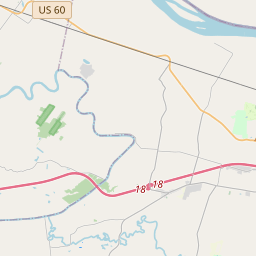Courthouse Burned







Twenty-two Kentucky courthouses were burned during Civil War, nineteen in last fifteen months: twelve by Confederates, eight by guerrillas, two by Union accident. See map on reverse side. Jan. 4, 1865, the courthouse at Owensboro, occupied by Union troops, was burned by guerrillas. The records of all county offices saved by the respective officers.
Erected October 22, 1964
April 12, 1861: The Civil War begins with the Confederate attack on Fort Sumter, located in South Carolina's Charleston Harbor.
April 15, 1861: President Abraham Lincoln issues a call for 75,000 volunteers to serve in the Union Army to suppress the rebellion.
May 24, 1861: The first major land battle, known as the First Battle of Bull Run (or First Battle of Manassas), takes place in Virginia. It ends in Confederate victory.
September 17, 1862: The Battle of Antietam in Maryland becomes the bloodiest single-day battle in American history, with heavy casualties on both sides. The Union forces, commanded by General George McClellan, manage to halt Confederate General Robert E. Lee's advance into Union territory.
January 1, 1863: President Lincoln issues the Emancipation Proclamation, declaring that all slaves in Confederate-held territories are to be set free. However, the proclamation does not immediately free all slaves in the United States.
July 1-3, 1863: The Battle of Gettysburg in Pennsylvania takes place, resulting in a significant Union victory and inflicting heavy casualties on Confederate forces. It marks a turning point in the war.
November 19, 1863: President Lincoln delivers the Gettysburg Address, emphasizing the principles of liberty, equality, and the preservation of the Union.
April 9, 1865: General Robert E. Lee surrenders to Union General Ulysses S. Grant at Appomattox Court House in Virginia, effectively ending the Civil War.
April 14, 1865: President Lincoln is assassinated by John Wilkes Booth while attending a play at Ford's Theatre in Washington, D.C.
May 10, 1865: Confederate President Jefferson Davis is captured, signaling the collapse of the Confederate government.
December 6, 1865: The Thirteenth Amendment to the United States Constitution is ratified, officially abolishing slavery throughout the country.
While this timeline provides an overview of key events, it is important to note that the Civil War spanned over four years, from 1861 to 1865, and encompassed numerous battles, campaigns, and political developments that shaped the course of American history.
In 1937, the town of Maysville, Kentucky, became the site of the first public works project built under President Franklin D. Roosevelt's New Deal program.
The county grew rapidly during the early years, with the construction of roads and the development of agriculture. In the mid-1800s, the construction of the Owensboro and Nashville Railroad brought further growth to the county, facilitating the transportation of goods and people. Owensboro, the county seat, became a thriving center for trade and commerce.
Daviess County played a significant role in the Civil War, as it was located on the border between the Union and the Confederacy. The county was primarily pro-Union, but there were sympathizers for the Confederacy as well. A number of skirmishes took place in the area, with bands of guerilla fighters causing disruptions throughout the war.
In the 20th century, Daviess County continued to develop economically and became known for its manufacturing industry, particularly in the production of tobacco products. Owensboro became a hub for tobacco processing plants and cigarette manufacturing. The county also experienced growth in other sectors, such as education and healthcare, with the establishment of the Owensboro Medical Health System and the opening of Owensboro Community and Technical College.
Today, Daviess County remains a vibrant and diverse community with a thriving economy. It continues to be known for its agricultural industry, as well as its contributions to the manufacturing, healthcare, and education sectors. The county's rich history is evident in its historical landmarks, museums, and annual events that celebrate its heritage.
Daviess County Timeline
This timeline provides a glimpse into the major events and milestones that have shaped the history of Daviess County, Kentucky.
- 1799: Daviess County, Kentucky is established.
- 1815: The first courthouse is built in the county seat of Owensboro.
- 1825: The Owensboro and Nashville Railroad is authorized, opening up transportation opportunities in the area.
- 1837: The county's first bank, Daviess County Bank, is established in Owensboro.
- 1861-1865: Daviess County residents participate in the American Civil War, with many joining the Union Army.
- 1873: The Owensboro City School District is created.
- 1889: Owensboro becomes the county seat of Daviess County.
- 1920: The first commercial airfield, Owensboro Municipal Airport, opens in Daviess County.
- 1937: The Ohio River flood destroys much of Owensboro, leading to extensive reconstruction efforts.
- 1954: The Glover H. Cary Bridge, connecting Owensboro and Spencer County, Indiana, is completed.
- 1969: The Western Kentucky Botanical Garden is established in Owensboro.
- 1981: Owensboro hosts the International Bar-B-Q Festival for the first time.
- 2012: The Owensboro Convention Center opens, providing a venue for events and conferences.